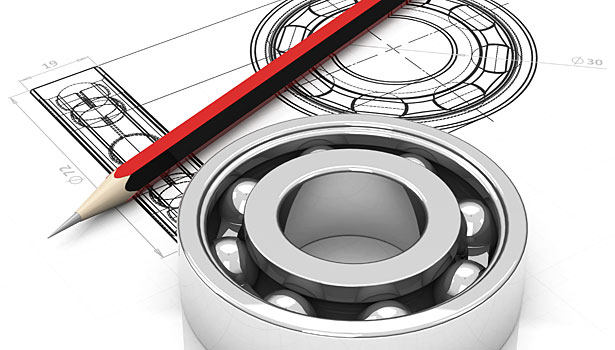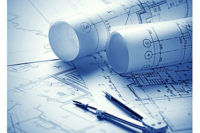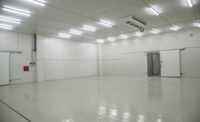The monitor is blank, except for the icons that tell me: “Start designing!”
Reruns of this episode have been experienced by engineers, designers and operations personnel when they ask the question, “How do I start to design equipment or a processing facility?” The difficult part of designing equipment or laying out a facility is to have a clear starting point. As with any technology or advancement, equipment is designed, built and continually improved to meet a function. Whether equipment is needed to aid in harvesting, further processing or packaging, there is a functional advantage to improve a process.
And as the monitor continues to mock me, asking, “When are you going to start designing?” there are myriad difficult questions that need answers. Equipment needs to be functional, meet safety requirements and be easy to clean and maintain. Within these areas are a subset of questions. In order to clean the design process, one needs to funnel from the larger questions to the detailed ones.
Functionality
The reason to design and build equipment is to fulfill a needed function. Whether a product needs to be vacuum tumbled, cut, conveyed or packaged, the design must provide some type of added value. By adding value, productivity is improved and ultimately customer satisfaction is raised.
“So what is so difficult about designing equipment?” is a question that has been heard all too often at trade shows. It may seem simple once the equipment is sitting on a showroom floor or plant floor, but as the blank monitor, notepad or back of a napkin attests, it is not “easy” to design equipment. For functionality, it is best to start with two simple design questions: “What is the primary function?” and “Is this a new process or an improvement on what currently exists?” Once the purpose is clearly defined, the map becomes easier to navigate. The two points that need to be met in the next phase of design are simplicity of manufacturing and maintenance.
As most companies are striving for a clean nutritional label, equipment manufacturers want a cleaner build and assembly plan. Complicated geometries, excessive bends, cuts, welds and parts not only lead to a more costly piece of equipment but also a potential food-safety nightmare.
Safety
First and foremost is human safety and food safety. A machine could be functional but lack the proper safeguards to protect those working around it. We have seen significant advances in machine guarding over the last several decades. As some machines become complex, guarding has evolved to minimize the exposure to risks for operators and cleaners of equipment.
Minimizing the risk is not eliminating the risk. One element designers cannot change is the human operator who may bypass required safeties or lockout/tagout procedures. We may never be able to eliminate the human factor in safety issues with machines, but we can focus on training and education as we do with food safety, which also is critical to the overall safety design.
What have we learned from our past design flaws is easily summarized in the AMI Equipment Design Task Force’s 10 Principles of Sanitary Design. About 13 years ago we developed 10 principles for sanitary design of equipment, which now seem rudimentary. But those principles led to improved sanitary design and overall equipment build and installation benefits. If a piece of equipment is easy to clean, more than likely the build and assembly processes were improved.
Cleanability
Unfortunately, we get into the mindset that production is paramount. Yes, production is the generator of revenue but it is not an isolated function. The best theoretically designed equipment is useless if it cannot be cleaned to a microbiological level. Hinges, creases, niches and other places where contaminants can hide can make some equipment useless.
The 10 principles are available through many sources with an updated version. The common thread with all of them is simplicity. And yet you may ask, “If it is so simple, why is the monitor still blank?” Just because something is simple does not mean it is easy.
Anyone who has spent time on a sanitation crew understands the challenges presented. It is less burdensome to properly clean equipment when there are minimum parts, easy disassembly and assembly and accessibility. This also is a better opportunity for the pre-operational inspection by one’s quality assurance technicians and USDA inspectors and maintenance personnel.
Maintenance
The maintenance department is the backbone of any plant. These first responders of the plant keep the machines running, utilities monitored and infrastructure in good repair. Whether the main break goes down, refrigeration systems fail or equipment breaks down, a complicated piece of equipment may prevent maintenance personnel from working on it out of a lack of understanding or too many issues that cannot be trouble shot in the right way.
A simple machine is easy to maintain. As engineers design equipment, sometimes there is a disconnect over what will need to be maintained on a regular basis for machines. Easily accessible motors, drives and grease points will make service easier to provide. When designing equipment, I consciously walk through the sanitation process and maintenance of each portion. The simple question of “what if” is a tool many engineers use to set through the design before issues arise in the field. What one does to adjust to a failure leads to better designs on improved revisions.
Conclusion
With clarity of thought and purpose, my finger clicks the mouse and icons jump to life. Lines are laid out and the once-blank screen is populated with color, depth and the beginning of new equipment and plant designs. The continual process of questioning and answering the basic areas of functionality, safety, cleanability and maintenance in a combined format will lead to clean equipment and process designs.
Of course this is not the end. There is no perfect prototype. But as our industry continually improves, the symbiotic relationship between processors, equipment designers and manufacturers can and will deliver quality products to consumers.









